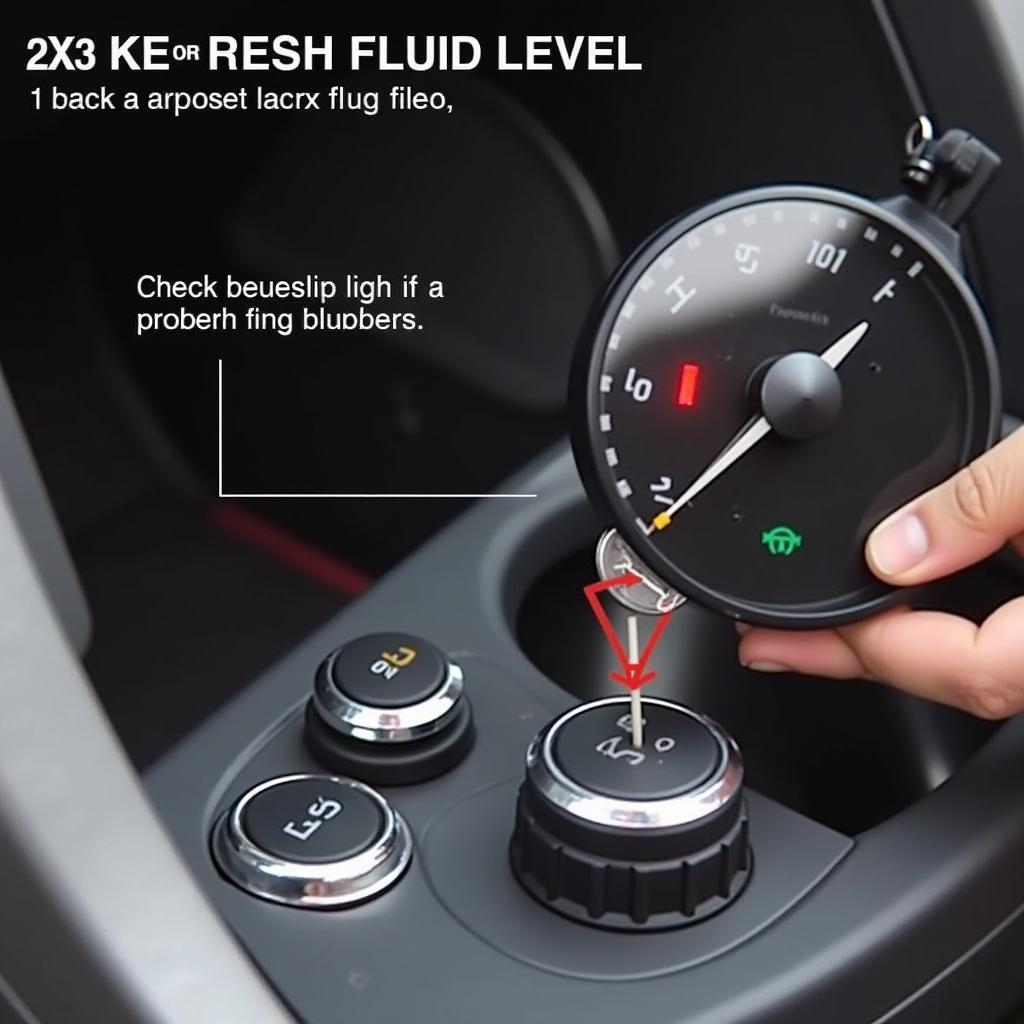A “warning brake proportioning” light on your dashboard signals a potential issue with your vehicle’s braking system, specifically the brake proportioning valve. This critical component helps distribute braking force evenly between the front and rear wheels, ensuring safe and effective stopping power. Ignoring this warning light could compromise your vehicle’s braking performance and potentially lead to dangerous situations. This article will guide you through understanding, diagnosing, and potentially resolving the “warning brake proportioning” light issue.
What Does the Warning Brake Proportioning Light Mean?
The “warning brake proportioning” light, often accompanied by the standard brake warning light, illuminates to indicate a malfunction within the brake proportioning system. This system plays a crucial role in maintaining vehicle stability during braking, especially under heavy braking or on varied road surfaces.
 Brake Proportioning Valve Diagram
Brake Proportioning Valve Diagram
Common Causes of the Warning Brake Proportioning Light
Several factors can trigger the “warning brake proportioning” light. Here are some of the most common culprits:
- Low Brake Fluid: Insufficient brake fluid level is a frequent cause. Brake fluid can leak from various components like brake lines, calipers, or the master cylinder.
- Faulty Brake Proportioning Valve: The valve itself might malfunction due to internal component failure or wear and tear, hindering proper brake fluid distribution.
- Blocked or Damaged Brake Lines: Clogged or damaged brake lines can disrupt brake fluid flow and pressure, affecting the proportioning valve’s ability to function correctly.
- Worn Brake Pads or Shoes: While not directly linked to the proportioning valve, excessively worn brake pads or shoes can trigger the warning light as a precautionary measure.
- ABS System Issues: Problems within the Anti-lock Braking System (ABS), though less common, can indirectly affect the brake proportioning system and trigger the warning light.
“Regular vehicle maintenance, including brake system inspections, can help identify and address potential issues before they escalate and trigger warning lights,” notes John Miller, a senior automotive engineer specializing in braking systems.
Troubleshooting the Warning Brake Proportioning Light
 Checking Brake Fluid Level
Checking Brake Fluid Level
If your “warning brake proportioning” light illuminates, it’s crucial to investigate the issue promptly:
- Check Brake Fluid Level: Begin by safely parking your vehicle and allowing the engine to cool. Open the hood and locate the brake fluid reservoir. Check the fluid level against the minimum and maximum markings on the reservoir. If the level is low, adding brake fluid might temporarily address the issue, but it’s essential to identify and fix the underlying cause of the low fluid level.
- Inspect Brake Lines and Hoses: Visually examine the brake lines and hoses for any signs of leaks, cracks, or damage. Pay close attention to areas where the lines connect to other components. Leaking brake fluid appears as a clear or yellowish liquid and can be slippery to the touch.
- Listen for Unusual Noises: While driving at low speeds, listen for any unusual noises coming from the brakes, such as grinding, screeching, or clicking. These noises can indicate worn brake pads or other brake component issues that require attention.
combination proportioning brake light warning switch leaks
When to Seek Professional Help
Diagnosing and repairing brake systems often require specialized tools and knowledge. If you’re uncomfortable performing the troubleshooting steps or suspect a more complex issue, it’s crucial to seek assistance from a qualified mechanic or automotive technician.
Attempting to repair the brake system without the necessary expertise can be dangerous and potentially worsen the problem.
Importance of Timely Action
“Ignoring a warning brake proportioning light can have serious consequences,” warns Miller. “Driving with a compromised brake proportioning system increases the risk of uneven braking, potentially leading to skidding, loss of control, and accidents.”
Addressing brake issues promptly ensures your vehicle’s braking system functions optimally, providing safe and reliable stopping power when you need it most.
FAQs About Warning Brake Proportioning Lights
1. Can I drive with the warning brake proportioning light on?
It’s strongly discouraged to drive with the warning brake proportioning light illuminated. Driving with a potential brake issue can compromise your safety and that of other road users.
2. How much does it cost to fix a brake proportioning valve?
The cost of repair varies depending on the specific issue, vehicle make and model, labor rates, and whether the valve needs replacement or repair. Consult a mechanic for an accurate estimate.
3. How often should I get my brakes inspected?
It’s generally recommended to have your brakes inspected at least once a year or every 12,000 miles, or more frequently if you notice any signs of brake problems.
4. Can I add brake fluid myself?
Yes, you can add brake fluid to the reservoir, but it’s crucial to use the correct type of brake fluid as specified in your vehicle owner’s manual.
5. Is it safe to ignore the warning light if my brakes seem to be working fine?
No, it’s never safe to ignore a warning light related to your vehicle’s braking system. Even if the brakes feel normal, there could be an underlying issue that needs attention.
By understanding the purpose of the brake proportioning system, recognizing the warning signs, and taking prompt action when necessary, you can ensure your vehicle’s braking system operates safely and effectively, keeping you and others safe on the road.

